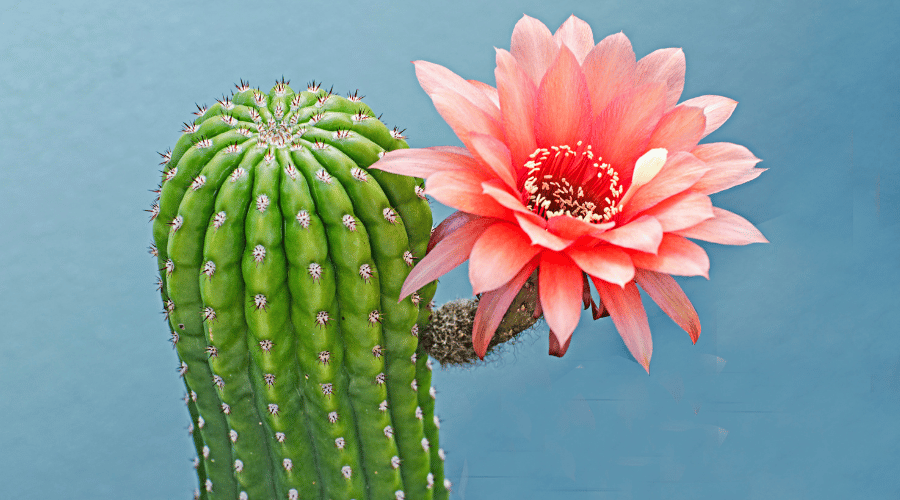Often, people think cactus is a houseplant that doesn’t die, will adapt to any environment in which it is grown, and can’t be killed. Unfortunately, this is not the case. Killing a cactus is difficult – but it is not impossible. In the next article, I’ll attempt to explain how to prevent your cactus from dying and the preliminary signs that your cactus may be dying.
How to tell if your cactus is dying?
As a general rule, Your cactus may be dying because it has received a lot of water which causes the plant to rot. Five preliminary signs that suggest your cactus may be dying are:
- There is a tendency for cacti to fall over or to be very loose in the soil.
- The Spikes of the cactus can fall off.
- If your cactus is dying, it may change its color from yellow or green to brown.
- Overwatered cactus are soft and squishy, while underwatered plants are wrinkled and puckered. Plump cacti are firm and plump.
- The Cactus smells bad, indicating rotting organic material. This usually means the plant cannot be saved.
If your cactus fits one of the signs above, don’t worry! Your cactus may still be salvageable if it does not smell bad, depending on the degree of rot on it.
How do you treat a dying cactus?
Here are several steps you can take to restore your cactus to health and disease-free status:
Rotting Parts Must Be Removed
It is important to cut off the black or brown parts of the cactus. These are the areas where the cactus has rotted, and these must be removed.
You may wish to replace the plant’s soil if your soil is waterlogged or at the very least try to dry the soil thoroughly before replanting the plant if the soil is waterlogged.
Overwatering is usually the cause of rot, so keep it in mind in the future.
Choose a pot that has drainage holes for your cactus
If your cactus is in a container without drainage holes, move it to one with drainage holes, this will allow excess water to exit and won’t result in overwatering.
Also, Pots made from terracotta or clay have a porous structure that allows potting soil to dry evenly, which is ideal for cacti.
Remove dirt and dust
Dirt or dust can ruin the cacti’s ability to process light. It is possible to remove this residue with the help of a sponge or rag. You may wish to wash your cactus under the sink under the faucet or with a sponge soaked in water and a drop of dish soap.
Getting Rid of Insects & Pests
Besides pests and insects, cacti can also be killed by insects such as spider mites and mealybugs, which cause yellowing sections on the plant and make it ill. Spider mites are tiny red spiders with webs that are like sheets. Mealybugs appear in powdery white clusters. You can purchase spider mite solutions from your local nursery, while mealybugs can be killed with rubbing alcohol.

Set Sunlight Adjustments
If it becomes narrow or rounded, you may need to add more sunlight to your cactus. More sunlight should be added for cacti that are becoming narrow or rounded. You can put the plant where it receives more sunlight or move it during midday to get the best results.
Change The Watering Time
To prevent root rot, the soil should dry completely before watering wilted, shrinking, or wrinkled cacti. Watering should be adjusted based on the temperature and season. If your cactus is in a pot, ensure it drains easily so that excess water doesn’t cause root rot. You’ll need to water your plants about one time per week during the hotter parts of the year. You should back off watering during the cooler months and only water if the soil is completely dry.
How To Revive Your cacti

The ability of your cactus to revive depends in part on how long it has been exposed to overwatering and cold temperatures for so long that it can survive or not. If a cactus is watered properly, has the right potting soil, is at the right temperature, and gets lots of sun in the following weeks, it can recover quickly.
Here are some tips that will help you To Revive Your cacti:
- Place the cactus in at least 6 hours of direct sunlight to recreate its natural conditions.
- Keeping your plants at a temperature of 55°F to 85°F (12°C to 30°C) will help prevent root rot.
- Furthermore, the soil at this temperature needs to dry properly between waterings.
- Every time you water your cactus, rotate it 45 degrees. This ensures even growth and prevents the cactus from leaning too much on one side.
- Discard the old potting soil since it can harbor fungal disease pathogens that turn cacti squishy. Replace the old potting soil with well-draining succulent and cacti soil. In the cactus’ native environment, root rot is significantly reduced by the well-draining and porous stricture.
- Squishy cactus indicates you are watering too often—only when the soil is completely dry. Feel the soil through drainage holes in the base to determine when it is completely dry before watering.
There is a chance the root rot of the cactus might be severe, and the only way to save it is to propagate from any healthy tissue left or offshoots that can be propagated from the plant’s squishy, yellow, brown, or black areas.

Recent Posts
Unlocking the secret to expanding your begonia maculata family is like discovering a treasure trove of green goodness. If you've ever marveled at the stunning beauty of angel wing begonia leaves and...
If you've ever found yourself marveling at the surreal beauty of air plant blooms, you're in for a treat! These enchanting bursts of color amidst a sea of lush green foliage are like nature's way of...

